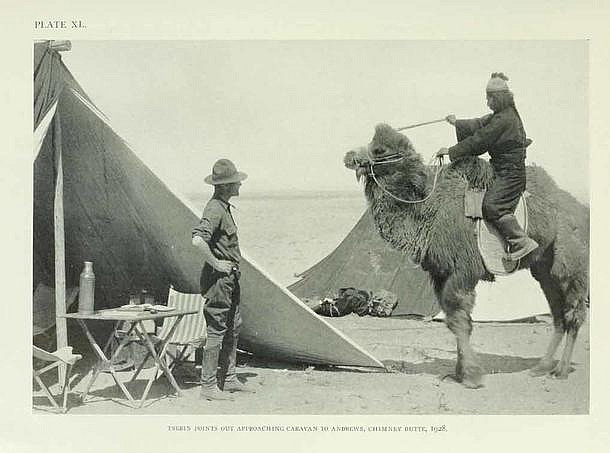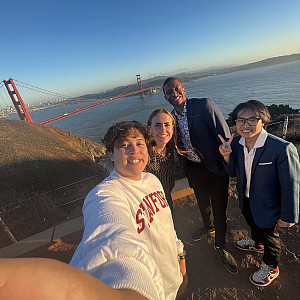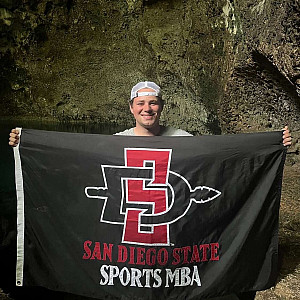College gets treasured archives of real-life Indiana Jones
Adventurer/zoologist Roy Chapman Andrews’ granddaughter donates historical items to his alma mater.

Unearthing a nest of prehistoric dinosaur eggs in the hostile remoteness of the Gobi Desert in 1923, uncovering a new species, and surviving a typhoon — all were just another day at the office for the explorer and zoologist.
This summer’s release of Indiana Jones and the Dial of Destiny re-awakened interest in Andrews, who bears an uncanny likeness to the globetrotting professor and archeologist character created by filmmakers Steven Spielberg and George Lucas and brought to life by actor Harrison Ford.
In a campaign hat, dusty jodhpurs, and a pistol in a leather holster slung over his hip, Andrews wasn’t dressing for a movie set but for real-life hunting, exploring the Asian continent and uncovering landmark scientific discoveries of dinosaurs, whales, and more species, in the early 20th century.
Now some of the adventurer’s most treasured papers and objects have landed at Beloit College, not under a rolling boulder booby trap but for Indiana Jones fans to see.

In five expeditions to Mongolia and China, sometimes traveling by camel, the Beloit native discovered new species of dinosaurs and the largest mammal known then — a mastodon with a shovel-shaped jaw.
“It was really unprecedented what Andrews was bringing back – it would be hard to match even in today’s world,” says Shannon Fie, Beloit College professor of anthropology and president of the Roy Chapman Andrews Society.

The explorer grew up in Beloit in the late 1800s keen on hunting, nature, and his self-taught hobby, taxidermy. His curiosity and intellect drew the teenager up the hill to Beloit College. As a Beloiter, he leaned into adventures and outdoor pursuits with one goal: to travel around the globe making extraordinary discoveries.
“I wanted to go everywhere. I would have started on a day’s notice for the North Pole or the South, to the jungle or the desert. It made not the slightest difference to me,” Andrews wrote in his autobiography Under a Lucky Star.
After graduating with an English degree from Beloit and eager to get a foot in the door, Andrews headed to New York City and took a job as a janitor at the American Museum of Natural History. Eager and ambitious, the young man eventually led specimen-collecting expeditions across the globe.
Andrews chronicled his expeditions in dozens of books, some with titles that sound like movie titles: Quest of the Snow Leopard, Ends of the Earth, and Across the Mongolian Plains.
Having Andrews’ treasured artifacts, handwritten notes, and memorabilia in the campus archives is thrilling, says Ann Bausum’79, a former Beloit College Magazine editor who wrote Dragon Bones and Dinosaur Eggs, a children’s book about Andrews’s adventures.
“I think it’s this ‘light bulb’ moment, that exploring isn’t just a piece of history, it’s happening all the time,” Bausum says. “Wisconsin created one of the most remarkable explorers of the 20th century, and Beloit College and the City of Beloit nurtured this person with an affection that lasted a lifetime.”
Andrews was a celebrity of his time, boldly peering from the cover of Time magazine and facing reporters jockeying for the latest news when he returned from his six-month-long expeditions.
Returning from his far-flung travels, Andrews graciously remembered Beloit and Beloit College, often sharing lively tales of his journey, promoting the college, donating items to the archives, and inspiring others to be explorers. That spirit of discovery lives on at Beloit College.


